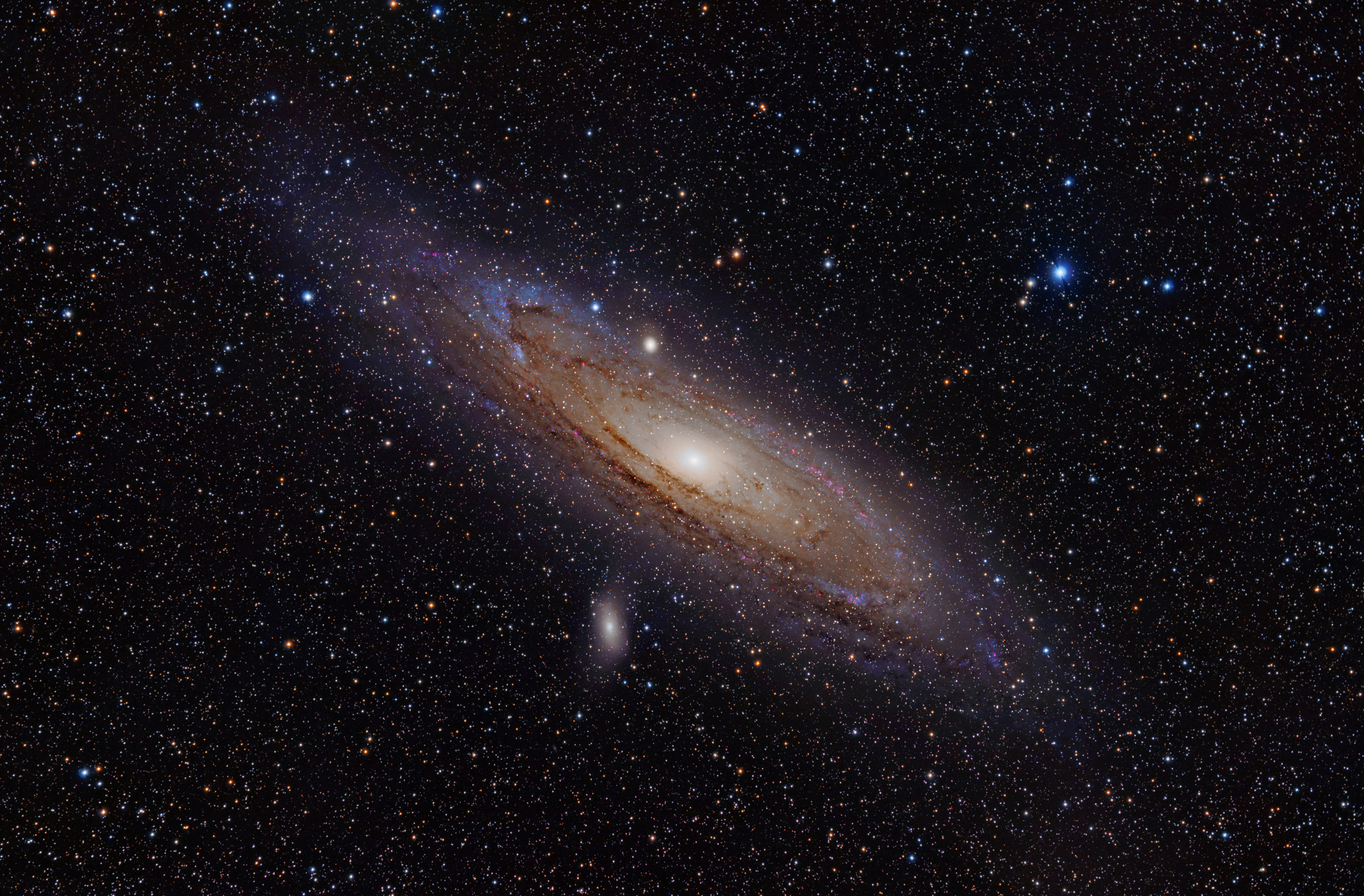A team of astronomers from the UK, U.S. and Europe have identified a large stellar disk in the nearby Andromeda galaxy for the first time. The discovery and properties of thick disk limit the dominant physical processes involved in the formation and evolution of spiral galaxies large as our own Milky Way .
By analyzing the precise measurements of the velocities of bright individual stars in the Andromeda galaxy with the Keck telescope in Hawaii, the team has managed to separate the stars that trace a thick disc that compose the thin disk, and evaluate how they differ in height, width and chemistry.

image of the Andromeda galaxy made with a filter h-alpha.Crédito.Adam Evans.

schematic representation of a disc structure grueso.Este thick disk consists of stars they are typically older than those located in the thin disk. making it ideal for studying galaxy evolution. (Credit: Amanda Smith, graphics IoA officer.)
graph shows the ages and orientations of the component stars in the disks of galaxias.El halo (spheroid) has the oldest population followed grueso.El thin disk drive typically contains more younger generations of stars. (Credit: RAVE Collaboration).
The spiral structure dominates the morphology of large galaxies today, with approximately 70% of all stars contained in a thin disk star. The structure of the disc contains the spiral arms traced by the regions of active star formation, and surrounding a central bulge of old stars in the center of the galaxy. From the observations of our own Milky Way and other nearby spiral, we know that these galaxies typically have two stellar disks, one thin and one thick, says study leader Michael Collins, PhD student at the Institute of Astronomy, Cambridge . The thick disk is composed of older stars whose orbits bring them down a path that extends above and below the thin disk more regular. The classic slim stellar disk that we see in images of the Hubble is the result of accretion of gas at the end of the formation of a galaxy,''Collins continues, while thick disks are produced at a stage much early life in the galaxy, making them ideal markers of the processes involved in galaxy evolution.''
Today, the formation of thick disk bien.Anteriormente not understood, the best hope for understanding this structure was by studying the thick disk of our own galaxy, but much of it is hidden from our view. The discovery of a thick disk similar Andromeda has a much cleaner view of the structure espiral.Andrómeda is the closest large spiral to the Milky Way, close enough to be visible to the naked eye - and can be viewed in its entirety from the Milky Way. Astronomers will be able to determine the properties of the disc through the full extent of the galaxy and look for signs of the events related to their training. It requires an enormous amount of energy to cause the stars of a galaxy to form a thick disk component, and the theoretical models proposed include the accretion of smaller satellite galaxies, or a more subtle and continuous heating of stars in the galaxy's spiral arms.
Our initial study of this component and suggests that he is probably older than the thin disk with a different chemical composition,''said UCLA astronomer, Mike Rich, more detailed future observations will allow us to unravel the formation of the system Andromeda's disk, with the possibility of applying this knowledge to the formation of spiral galaxies in the Universe.''
This result is one of the most exciting emerging from the largest study of the movement and chemistry of the stars in the outskirts of Andromeda,''said team member Dr. Scott Chapman, also of the Institute of Astronomy. Find the thick disk has given us a unique and spectacular view of the Andromeda system training, and will certainly contribute to our understanding of this complex process.''
read the study HERE
source of information:
http://www.universetoday.com/83315/thick-stellar-disk-isolated-in-andromeda/
0 comments:
Post a Comment